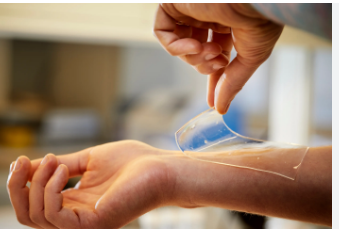
Hydrogel dressings are an extremely popular choice in modern wound care due to their unique characteristics and benefits. These advanced dressings are designed to provide a moist environment that helps in the healing process. This article will help you be aware of concerning hydrogel dressing.
What Are Hydrogel Dressings?
hydrogel manufacturing,hydro gel are composed of an emulsion-like substance which contains an extremely high proportion of water. The composition of the dressing allows it to absorb wound exudate (fluid) while maintaining an opacity around the wound. They are typically utilized to treat partial and full-thickness injuries, such as burns, ulcers, as well as surgical wounds.
Benefits of Hydrogel Dressings
Intention to Retain Moisture: One of the main benefits for hydrogel dressings is the capacity to maintain a moist wound environment. This aids in the migration of cells and repair of tissues that can help speed the healing process and reduce scarring.
Pain Relief: Hydrogel dressings can offer a cushioning impact that helps to reduce discomfort and pain associated to wound care. The gel can also help to soothe inflamed or irritated skin.
The dressings aid in autolytic debridement. This is a procedure which allows the body’s enzymes to take out damaged tissue and dead cells from the site of injury. This helps in preparing the wound bed for further healing.
Reduced Risk of Infection: By creating a barrier to prevent the spread of infection, hydrogel dressings help to reduce the chance of contracting an infection. They also minimize the requirement for frequent dressing changes, which can decrease the risk of infection.
When to Use Hydrogel Dressings
Hydrogel dressings are especially beneficial for wounds that are dry or have moderate to low exudate. They are perfect for wounds that have necrotic tissue because they help reduce dead tissue and soften it. But, they might not be suitable for heavily bleeding wounds or those that show evidence of infection because excessive moisture could cause maceration (skin breaking down due to excess moisture).
Application and Care
The application of the hydrogel dressing is straightforward. Cleanse the wound with a thorough clean, then put on the hydrogel dressing and fix it using either tape or a bandage, if necessary. Regular monitoring is essential to ensure that the dressing is in good condition and the wound is healing correctly. Most often, hydrogel dressings need to be replaced every 1-3 days, based on the quantity of exudate as well as the manufacturer’s recommendations.
Conclusion
Hydrogel dressings are a valuable tool in wound management, offering numerous benefits that aid in healing and ease. They are able to keep the environment moist, provide relief from pain and natural debridement makes them an versatile choice for various types of wounds. Like any other medical device, they must be used based on the specific needs of the injury and under the guidance of a healthcare professional.

